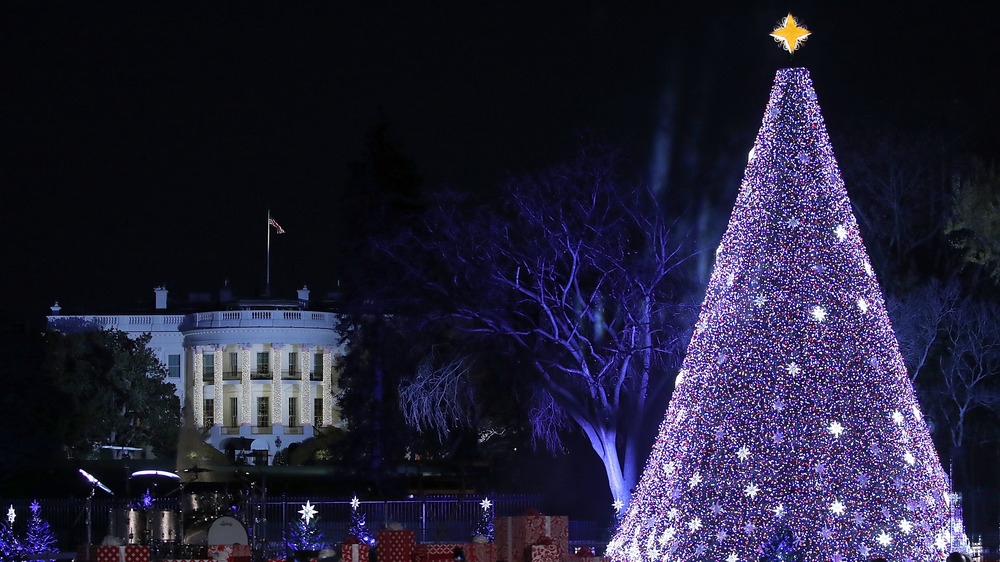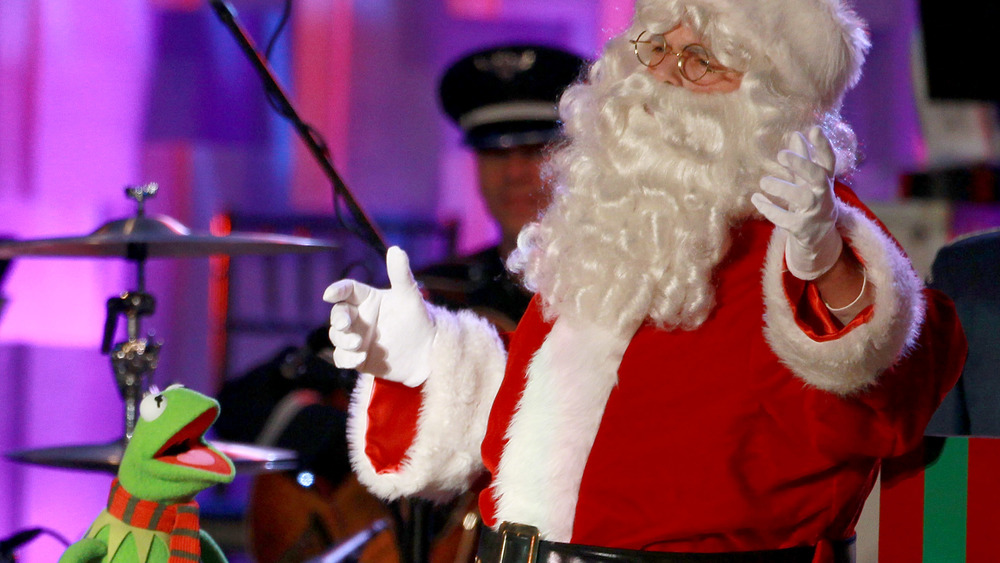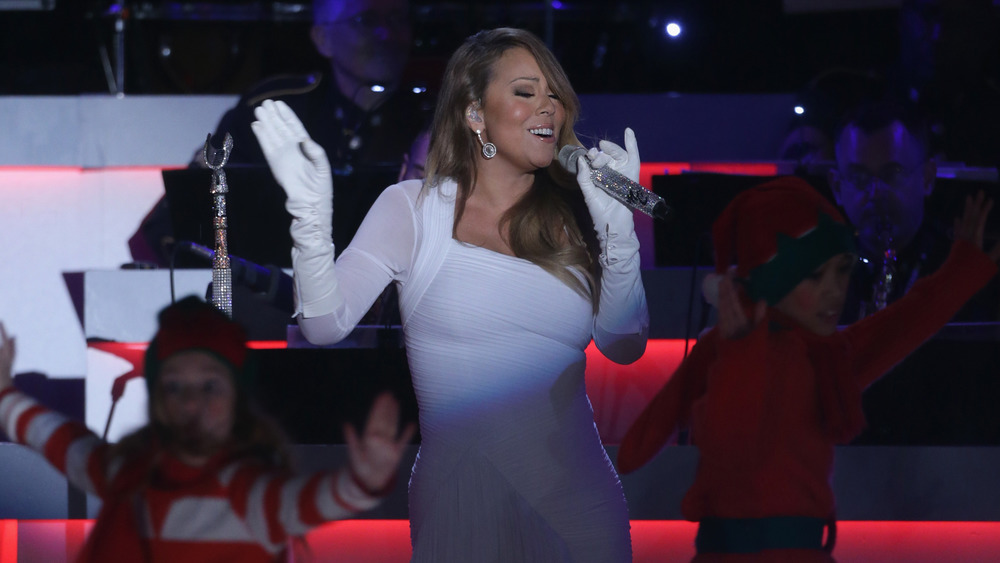What Is The Pageant Of Peace?
The Christmas season is not complete in the nation's capital without the annual Christmas tree lighting, and the month-long celebration called the Pageant of Peace. It seems a big to-do for the season, and even the event has come under fire.
The Pageant of Peace began in 1954, although the tradition of National Christmas Trees dates back further, to the 1920s. Before 1954, holiday celebrations centered around the tree alone. Downtown DC wrote that President Calvin Coolidge started the tradition in 1923 with a program that included lighting the Christmas tree and entertainment. Today there are dancers, singers, marching bands, and a message from the president.
Lighting the tree became a symbol of hope for the country, especially the years during and after World War II. Many people started applying for one of the free tickets, distributed by lottery, in order to attend the lighting and watch the festivities. Clearly, the Christmas event was growing quickly.
The Washington Board of Trade and the Washington Citizen's Committee started planning a more significant celebration to accommodate more spectators. According to the National Christmas Tree Lighting event's official website, it decided to expand the celebrations to three weeks. They also conceived of the Pathway of Peace, a walkway lined with smaller trees representing all 50 states, US territories, and the District of Columbia. The first Pageant of Peace was held on December 17, 1954. President Dwight D. Eisenhower lit the lights on that year's 67-foot Michigan balsam fir.
The pageant grows
That first Pageant of Peace was held inside the White House's Ellipse. According to the National Park Service, that year was also the first time a life-size nativity scene was presented. There were also exhibition stalls and stages for performances. Reindeer made an appearance, pulling the sleigh carrying Santa. More than 20,000 people visited the Pageant of Peace that year, and around 6,000 people performed during the festivities.
The Pageant of Peace proved to be so popular that the next year, the organizers created a non-profit organization to take charge of the planning: Pageant of Peace, Inc., which The Washington Post reports organizes the event every year in partnership with the National Park Service.
The President typically lights the tree and presides over the Pageant of Peace, but in 1961, President John F. Kennedy went to see his ailing father, and Vice-president Lyndon Johnson stood in the president's place. In 1963, the year of Kennedy's assassination, the ceremony was delayed to give the country time to mourn.
While intended to be a celebration for all people in the country, there are many who feel it doesn't correctly represent everyone. The National Parks Service noted the first legal challenge to the Pageant of Peace was in 1968, when the American Civil Liberties Union (ACLU) said the trees being held up as a national symbol excluded other religions. The group pointed to the nativity scene, and the Parks Service gave up responsibility for the nativity and gave it to the non-profit.
It's a big concert
Beginning in the 1970s, the Pageant of Peace featured a living tree, a tree that is planted at the White House and is decorated with lights and ornaments for the Pageant. The trees did not always last in the White House, so a new one is planted every few years. The tree's decorators also began putting up train sets that zipped around the tree and served as part of children's entertainment during the event. The trees are now lit with LED lights to save on electricity and to be more environmentally friendly.
Over the years, the Pageant has featured famous celebrities and musicians. One year, the Queen of Christmas herself, Mariah Carey, performed. Every year, thousands of people come to watch the lighting live and stream into the festivities throughout the weeks it's held.
The event had gone on in-person since 1954, but the current pandemic put a halt to that this year. The Pageant of Peace was still held, albeit at a smaller capacity, and no live audience was allowed during the lighting ceremony. Instead, it was live-streamed, including the performances. Children from around the country crafted ornaments to be put on display on the tree.


